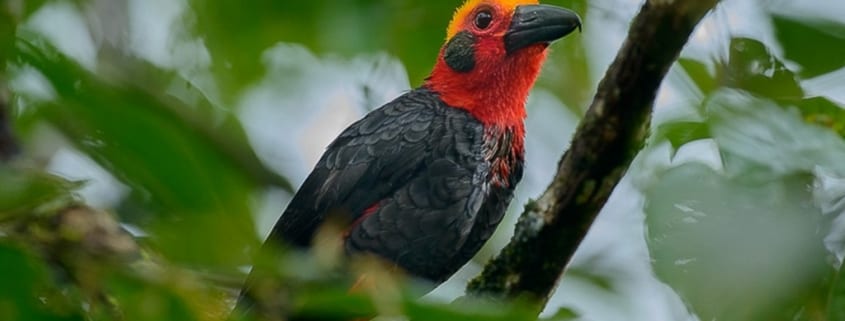Notes from the Field: Borneo
Dr. Glen Reynolds, the Director of the South East Asia Rainforest Research Project (SEARRP), discusses Rainforest Trust’s role in establishing the new Kuamut Forest Reserve and greater efforts to protect Borneo’s rainforests.
How did you first become involved in conservation and come to work in Borneo?
I first went to Borneo as an undergraduate to assist on a field research project, then developed ideas that led to a Ph.D. on forest restoration. Over the course of my studies, I was offered the opportunity to run the field research program in Danum Valley with the South East Asia Rainforest Research Partnership (SEARRP). I haven’t looked back since.
What’s special about Borneo’s rainforest and the Kuamut rainforest in particular?
Borneo’s rainforests are the least disturbed that remain in Southeast Asia.
Most of these trees are dipterocarps – a group of tropical trees that abound in Borneo. In fact, we’ve recently had one of our field researchers discover what appears to be the tallest tropical forest tree ever recorded at one of our sister sites in Sabah. We’ve just measured it at just a shade less than 90 meters, roughly the limit for tropical trees.
For me, as someone interested in trees, the stature of the trees in these forests is incredible. It’s by far the tallest rainforest in the world with the canopy regularly exceeding 70 meters.
What are some innovative ways SEARRP is saving Borneo’s remaining forest and planning for the future?
There is a window of opportunity in Borneo to protect large areas of what’s left of the forest. The timber boom is long over and most of the forests that were not protected have largely been exhausted of the timber they once supported. Also, the optimal areas for oil palm production have largely been planted.
Politicians from countries like Malaysia and Indonesia see logged forests as an already spent resource that can harmlessly be converted to oil palm plantations or agriculture. Now is the time to make a case to protect these remaining forests.
What is one key conservation message from SEARRP’s work in Sabah?
If there is a single message, it is to demonstrate the enormous importance that even degraded forests play in supporting biodiversity, protecting watersheds, storing carbon and much more. Having so much robust research to draw on has been really important in showing this value. It is not an accident that the protection we have seen in recent years in Sabah has been occurring in the important research sites, such as Kuamut, that Rainforest Trust has been instrumental in supporting.
The easy victories have been won in terms of protected areas. Now it all gets a bit trickier in where to prioritize conservation efforts. That could be in areas of continuous forests. It could be in highly fragmented habitats to decide crucial areas to reconnect and restore. This is where the very best science needs to come into play, such as sophisticated mapping techniques. For example, we have scientists using modeling to learn how species disperse across the landscape and the sorts of connectivity important for this movement. We have scientists looking at changes in climate to learn how it affects different animal and plant distributions, helping to decide what areas to protect as various species’ ranges and distributions shift.
Now is the right time to act in Sabah with a supportive government in place willing to make positive decisions based on scientific evidence.
What makes you excited about working with Rainforest Trust?
What we desperately need in conservation are examples of success. We’ve done that with Rainforest Trust in Sabah. Concrete, on the ground examples of this kind of marriage between scientists, conservation organizations and local governments have really delivered major conservation gains that stick. Now we need to bring in other elements at the landscape level, such as sustainable agriculture and forestry with pragmatic conservation that protects these key areas of forest. If we demonstrate that this works, then there’s no reason this model can’t be rolled out in other areas across Southeast Asia.
Do you have plans for future projects with Rainforest Trust?
We’re really excited by opportunities for expanding protected areas. Roughly 20% of Sabah is fully protected. The state government has committed to increasing that to about a third, but as of yet those areas have not been identified. So we’re really keen to work with Rainforest Trust not just to plan where those protected areas might be based on the best possible science, but also look at how they can be protected, managed, monitored and local communities engaged.
Learn more about Rainforest Trust and SEARRP’s efforts to establish the Kuamut Forest Reserve.
Header photo: The colorful Bornean Bristlehead is one of hundreds of birds found in the Kaumut Forest Reserve. Photo by Chien C. Lee.




